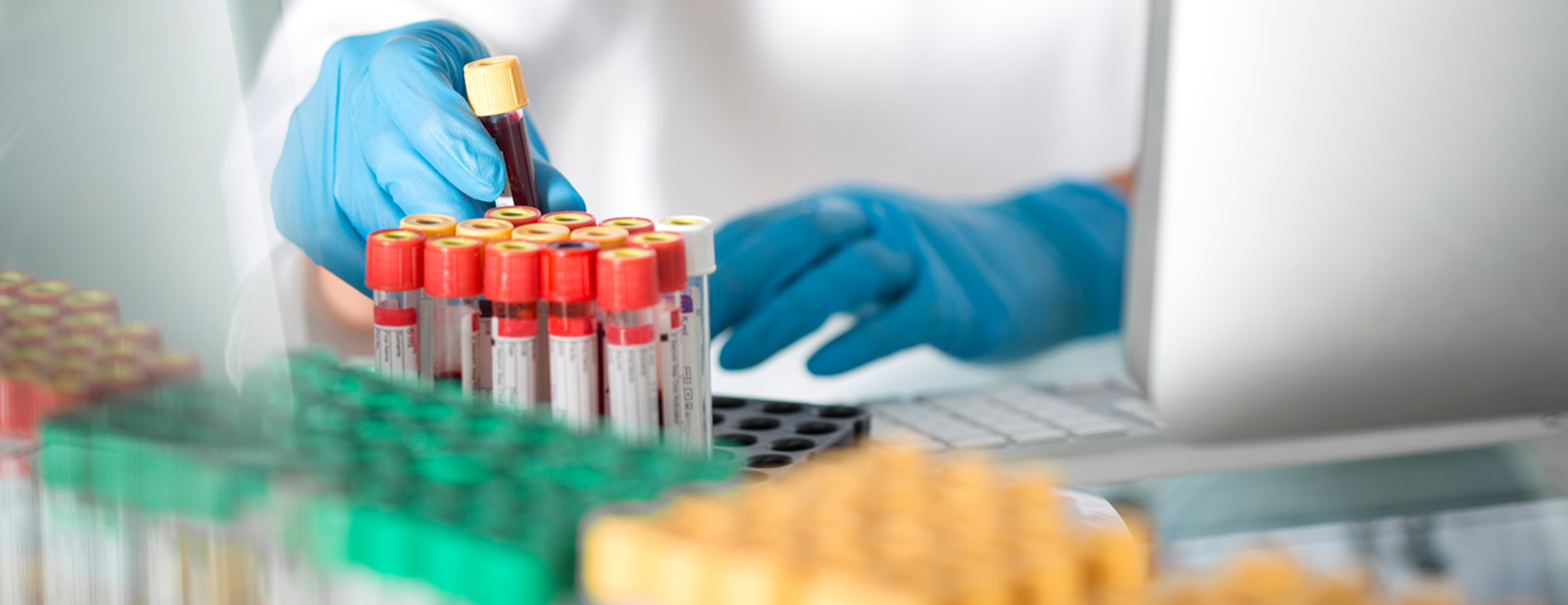
Acid mucopolysaccharides
Definition
Acid mucopolysaccharides is a test that measures the amount of
Mucopolysaccharides are long chains of sugar molecules in the body. They are often found in mucus and in fluid around the joints.
Alternative Names
AMP; Dermatan sulfate - urine; Urine heparan sulfate; Urine dermatan sulfate; Heparan sulfate - urine
How the Test is Performed
For the 24-hour test, you must urinate into a special bag or container every time you use the bathroom. Most often, you will be given two containers. You will urinate directly into the smaller special container and then transfer that urine into the other larger container.
- On day 1, urinate into the toilet when you wake up in the morning.
- After the first urination, urinate into the special container every time you use the bathroom for the next 24 hours. Transfer the urine into the larger container and keep the larger container in a cool place or in a refrigerator. Keep this container tightly capped.
- On day 2, urinate into the container in the morning again when you wake up and transfer this urine to the larger container.
- Label the larger container with your name, the date, the time of completion, and return it as instructed.
For an infant:
Thoroughly wash the area around the urethra (the hole where urine flows out). Open a urine collection bag (a plastic bag with an adhesive paper on one end).
- For males, place the entire penis in the bag and attach the adhesive paper to the skin.
- For females, place the bag over the two folds of skin on either side of the vagina (labia). Put a diaper on the baby (over the bag).
Check the infant often, and change the bag after the infant has urinated. Empty the urine from the bag into the container provided by your health care provider.
Active babies can move the bag, causing the urine to go into the diaper. You may need extra collection bags.
When finished, label the container and return it as you have been told.
How to Prepare for the Test
There is no special preparation needed.
How the Test will Feel
The test involves only normal urination, and there is no discomfort.
Why the Test is Performed
This test is done to diagnose a rare group of genetic disorders called mucopolysaccharidoses (MPS). These include, Hurler, Scheie, and Hurler/Scheie syndromes (MPS I), Hunter syndrome (MPS II), Sanfilippo syndrome (MPS III), Morquio syndrome (MPS IV), Maroteaux-Lamy syndrome (MPS VI), and Sly syndrome (MPS VII).
Most of the time, this test is done in infants who may have a symptom or family history of one of these disorders.
Normal Results
Normal levels vary with age and from lab to lab. Talk to your provider about the meaning of your specific test results.
What Abnormal Results Mean
Abnormally high levels could be consistent with a type of mucopolysaccharidosis. Further tests are needed to determine the specific type of mucopolysaccharidosis.
References
Kumar V, Abbas AK, Aster JC. Genetic disorders. In: Kumar V, Abbas AK, Aster JC, eds. Robbins and Cotran Pathologic Basis of Disease. 9th ed. Philadelphia, PA: Elsevier Saunders; 2015:chap 5.
Spranger JW. Mucopolysaccharidoses. In: Kliegman RM, St. Geme JW, Blum NJ, Shah SS, Tasker RC, Wilson KM, eds. Nelson Textbook of Pediatrics. 21st ed. Philadelphia, PA: Elsevier; 2020:chap 107.
Turnpenny PD, Ellard S. Inborn errors of metabolism. In: Turnpenny PD, Ellard S, eds. Emergy's Elements of Medical Genetics. 15th ed. Philadelphia, PA: Elsevier; 2017:chap 18.
Review Date: 04/19/2019
The information provided herein should not be used during any medical emergency or for the diagnosis or treatment of any medical condition. A licensed physician should be consulted for diagnosis and treatment of any and all medical conditions. Call 911 for all medical emergencies. Links to other sites are provided for information only -- they do not constitute endorsements of those other sites. Copyright ©2019 A.D.A.M., Inc., as modified by University of California San Francisco. Any duplication or distribution of the information contained herein is strictly prohibited.
Information developed by A.D.A.M., Inc. regarding tests and test results may not directly correspond with information provided by UCSF Health. Please discuss with your doctor any questions or concerns you may have.





